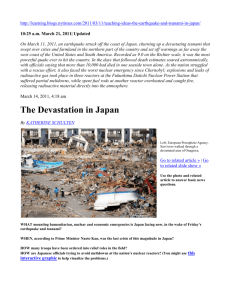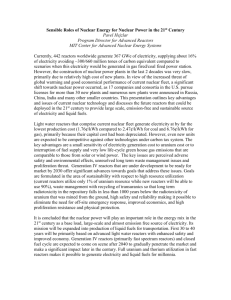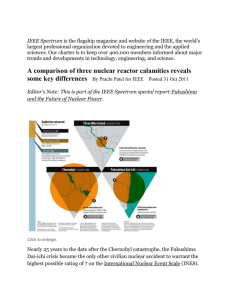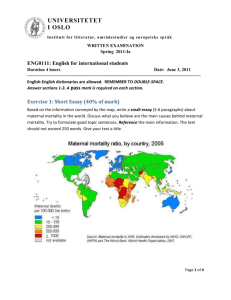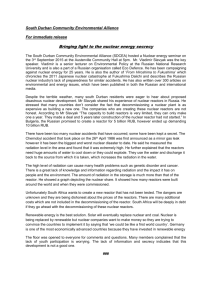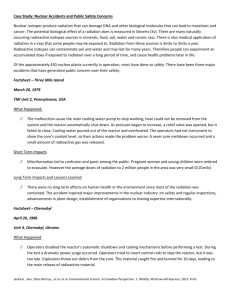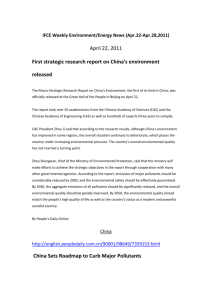Hazards and Management
advertisement
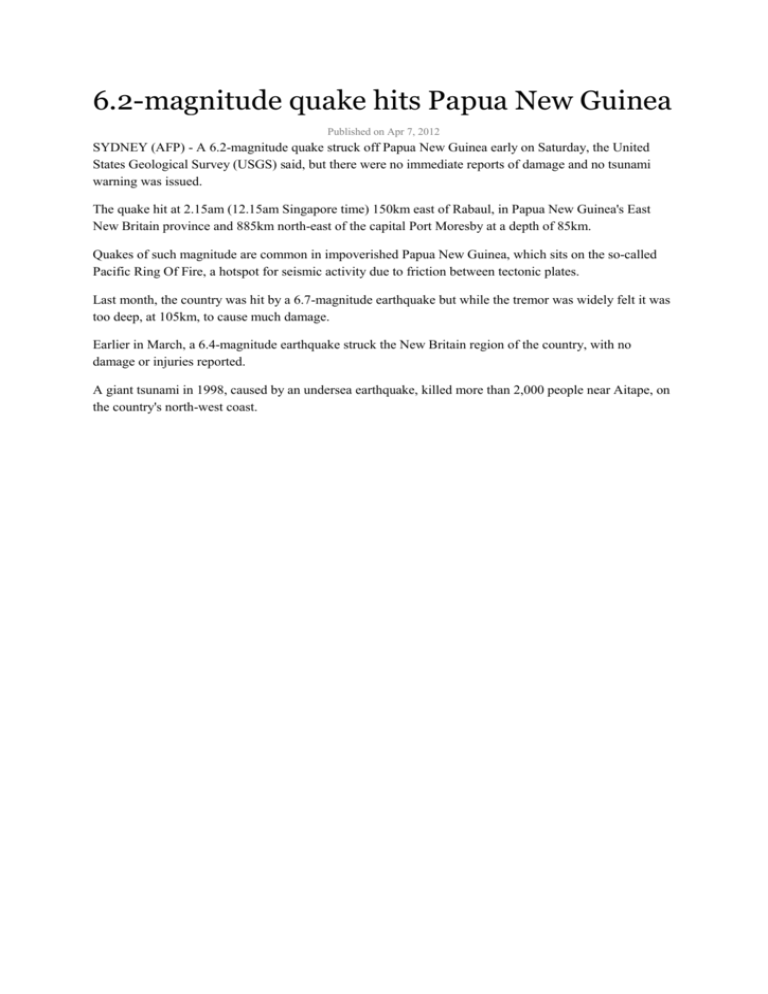
6.2-magnitude quake hits Papua New Guinea Published on Apr 7, 2012 SYDNEY (AFP) - A 6.2-magnitude quake struck off Papua New Guinea early on Saturday, the United States Geological Survey (USGS) said, but there were no immediate reports of damage and no tsunami warning was issued. The quake hit at 2.15am (12.15am Singapore time) 150km east of Rabaul, in Papua New Guinea's East New Britain province and 885km north-east of the capital Port Moresby at a depth of 85km. Quakes of such magnitude are common in impoverished Papua New Guinea, which sits on the so-called Pacific Ring Of Fire, a hotspot for seismic activity due to friction between tectonic plates. Last month, the country was hit by a 6.7-magnitude earthquake but while the tremor was widely felt it was too deep, at 105km, to cause much damage. Earlier in March, a 6.4-magnitude earthquake struck the New Britain region of the country, with no damage or injuries reported. A giant tsunami in 1998, caused by an undersea earthquake, killed more than 2,000 people near Aitape, on the country's north-west coast. Shallow 5.5-magnitude quake strikes west Indonesia Published on Apr 7, 2012 JAKARTA (AFP) - A shallow 5.5-magnitude quake struck western Indonesia early on Saturday, the United States Geological Survey (USGS) said, but no tsunami warning was issued and there were no reports of damage. The moderate-strength quake struck at 2.24am (3.34am Singapore time) off the Mentawai islands at a depth of just 5.5km, and 210km west of Bengkulu on Sumatra island, the USGS said. Indonesia sits on the Pacific Ring of Fire, where the meeting of continental plates causes high volcanic and seismic activity. Japan sets new safety standards for nuclear plants Published on Apr 7, 2012 Kansai Electric Power Co's Ohi nuclear power plant No. 3 (right) and No. 4 reactors are seen in Ohi, Fukui prefecture in this Jan 26, 2012, file photo. The Japanese government approved new safety guidelines for nuclear power plants on Friday in a bid to restart reactors idled after the Fukushima disaster last year. -- PHOTO: REUTERS TOKYO (AFP) - The Japanese government approved new safety guidelines for nuclear power plants on Friday in a bid to restart reactors idled after the Fukushima disaster last year. The move comes as the government gears up to decide whether two reactors in western Japan should be restarted. Only one of the country's 54 reactors remains in operation, raising the possibility of power shortages. The guidelines, approved by Prime Minister Yoshihiko Noda, include measures to prevent a nuclear accident even if reactors are hit by natural disasters as severe as those that ravaged the Fukushima Daiichi plant. Japan's formerly-trusted nuclear power industry lost public confidence when the earthquake and tsunami of March last year knocked out cooling systems at Fukushima, sending three reactors into meltdown. Tens of thousands of people were forced from their homes and vast swathes of farmland were contaminated in the world's worst nuclear accident for a quarter of a century. The new safety standards are said to be more extensive than the two-stage stress test mandated for nuclear power plants in the wake of the Fukushima crisis. The reactors must clear at least the first-stage test before they can resume operations. Industry minister Yukio Edano said the government is expected to take a decision next week on whether to restart two idled reactors at the Oi nuclear plant operated by Kansai Electric Power. 'We have yet to reach a conclusion,' the minister said. The government's nuclear safety regulators recently said the two reactors cleared the first-stage, despite strong public mistrust. In late March, Tokyo Electric Power, which operates the Fukushima plant, shut down a reactor for scheduled safety checks, leaving all its 17 reactors offline including three units that suffered a meltdown. Only one of Japan's 54 units - in northernmost Hokkaido - is still working, and that is scheduled to be shut down for maintenance work in May. Avalanche buries at least 150 Pakistani soldiers Published on Apr 7, 2012 In this Feb 19, 2012 file photo, Pakistani Army soldiers with the 20th Lancers Armored Regiment, carry supplies up the 2,400 meter (8,000-foot) mountain near their outpost, Kalpani Base, in Pakistan's Dir district. An avalanche smashed into a Pakistani army base on a Himalayan glacier close to India on Saturday, April 7, 2012, burying around 150 soldiers. -PHOTO: AP ISLAMABAD (AFP/REUTERS) - At least 150 Pakistani soldiers were buried alive in a remote area in the Himalayas when an avalanche crushed their camp, the military said on Saturday. The incident took place in Siachen area, in the north of Pakistan. Army spokesman Major General Athar Abbas told AFP that rescue work was ongoing. 'More than 150 soldiers of Northern Light Infantry (NLI) including a colonel were trapped when the avalanche hit a military camp,' Maj-Gen Abbas said. 'The rescue mission is continuing and rescuers are trying to rescue the soldiers.' The avalanche struck overnight, local media said. State-run Pakistan television said it was in Giyari area of Siachen, where the Pakistan army has a base. Avalanches and landslides frequently block roads and leave communities isolated in the mountains of Pakistan, neighbouring Afghanistan and in Kashmir, the Himalayan territory divided between rivals India and Pakistan. The Kashmir region - of which Siachen is a part - is divided between Pakistan and India and is claimed by both in full. Kashmir has caused two of the three wars between the neighbours since their independence in 1947 from Britain. Both Pakistan and India have deployed thousands of soldiers in the disputed Himalayan territory of Kashmir but harsh weather in Siachen is said to have claimed many more lives than actual fighting. Siachen is close to four of the world's 14 peaks over 8,000m - K2, Broad Peak, Gasherbrum I and Gasherbrum II - all of which are on the Pakistani side of the frontline.

